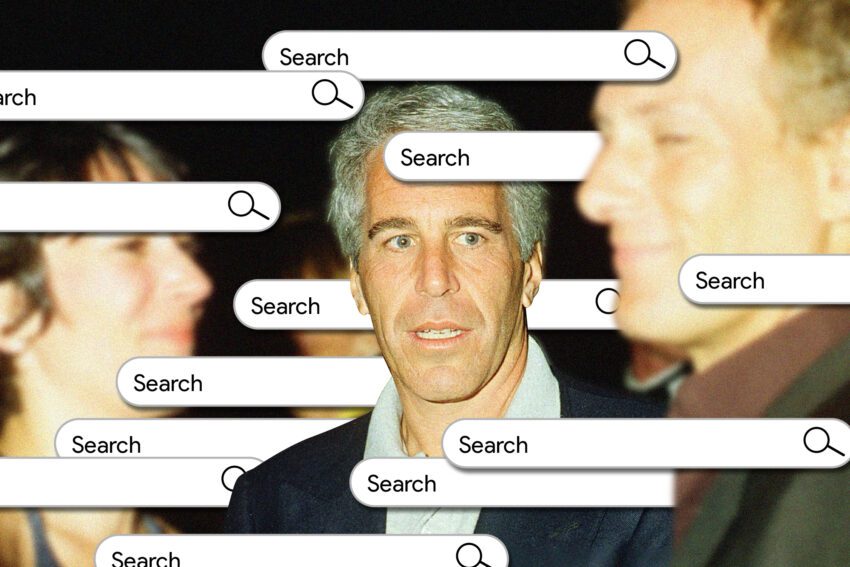
how jeffrey epstein used seo to bury Newly released documents reveal how Jeffrey Epstein employed search engine optimization (SEO) tactics to manipulate online narratives surrounding his criminal past.
how jeffrey epstein used seo to bury
Background on Epstein’s Reputation Management
On December 11, 2010, Jeffrey Epstein was increasingly concerned about his online presence. By this time, he had already pleaded guilty to soliciting prostitution from a minor and was a registered sex offender. Just days prior, he had been photographed in Central Park with Prince Andrew, further complicating his public image. In an email to an associate, Epstein expressed his dissatisfaction with the search results that appeared when someone Googled his name. “The Google page is not good,” he wrote, according to documents released by the House Oversight Committee. He also raised concerns about the tens of thousands of dollars spent on efforts to “clean up” his online reputation, stating, “I have yet to have a complete breakdown of payments. And the results are what they are.”
Epstein’s associate, Al Seckel, responded later that evening, sharing the search results he observed. These included Epstein’s Wikipedia page, articles from New York Magazine, a website titled “jeffreyepsteinscience.com,” and a story that accurately identified him as a sex offender. Seckel noted that while some negative articles had been pushed down in search results, the presence of the Huffington Post article remained a significant hurdle. “The Huffington Post is extremely hard to move, because it is so powerful, has millions of links to it, and uploads massive new and original content daily,” he explained.
SEO Tactics for Reputation Management
The documents reveal a concerted effort by Epstein and his associates to manipulate search engine results in his favor. They discussed various technical SEO tactics aimed at burying unflattering news articles and elevating positive content. This included strategies familiar to anyone versed in SEO, such as regularly publishing new content, optimizing images, and manipulating search queries to alter Google’s suggested terms.
Rand Fishkin, a longtime SEO consultant and co-founder of the digital marketing firm Moz, noted that the strategies employed by Epstein’s team were largely standard SEO practices. “I would say they were generally mostly best practices,” Fishkin stated. However, he also acknowledged that there could have been more sophisticated tactics at play that were not discussed in the emails.
One particularly striking claim in the documents involved the manipulation of Epstein’s Wikipedia page. Fishkin pointed out that during the late 2000s, Wikipedia had a significant impact on search rankings. Seckel claimed an “important victory” in December 2010, stating that the page no longer mentioned Epstein as a convicted sex offender or pedophile. Instead, it highlighted his philanthropic work and the Epstein Foundation. “We hacked the site to replace the mug shot and caption, and now it has an entirely different photo and caption. This was a big success,” Seckel wrote.
While it remains unclear what Seckel meant by “hacked,” Fishkin speculated that Epstein’s associates may have had connections to Wikipedia editors, potentially even paying them to alter the page. In March 2020, Wikipedia published a blog post discussing the edit wars surrounding Epstein’s page, which raised questions about paid editing. The New York Times reported in 2019 that a Wikipedia editor associated with Epstein had engaged in an editing spree that exaggerated details about his charitable contributions.
The Role of Wikipedia in Reputation Management
The Wikipedia article on Epstein proved to be influential. According to a Massachusetts Institute of Technology (MIT) report on Epstein’s connections with the MIT Media Lab, staff at the institution referenced Wikipedia when deciding whether to accept Epstein’s financial contributions. The report indicated that while the Wikipedia entry included details about Epstein’s crimes, it also contained statements that could be interpreted as downplaying the severity of the allegations.
These efforts to sanitize Epstein’s online presence were not entirely successful; however, they did manage to obscure the narrative for a time. By March 2011, Epstein’s Wikipedia page had been altered to include sections titled “Life” and “Solicitation of Prostitution,” reflecting a more sanitized version of his history.
Fishkin estimated that a project of this magnitude would typically cost around $100,000, along with ongoing monthly maintenance fees. “The prices just looked insanely low to me,” he remarked. “Here’s a billionaire who is supposedly worried about his reputation as a pedophile, arguing over a few thousand dollars. Honestly, the chutzpah is insane.”
Public Relations Strategies
Optimizing search results to fit a client’s narrative is a common practice among public relations (PR) agencies. In a document dated June 14, 2011, the PR firm Osborne & Partners LLP outlined a strategy for minimizing Epstein’s mentions in tabloids while establishing him as a “pioneering supporter of science and technology.” The plan included “cleaning up” Google results and getting Epstein in front of select editors and writers.
“We have hired an excellent team of Israeli experts for other clients, and there are many firms that claim to be able to optimize results this way but fail to deliver,” the document stated. “I cannot overstate the importance of this, because it is the initial source of information on you for many people.”
Later that year, in December 2011, Epstein’s publicist Christina Galbraith summarized tactics to push down negative press from Google results. She recommended hiring Reputation, a company that specializes in online reputation management. Galbraith noted that the process would take approximately a year to solidify and would cost between $10,000 and $15,000 per month. Reputation did not respond to inquiries about whether they ultimately worked with Epstein.
In addition to these strategies, Epstein and his associates flooded Google with flattering articles, exploiting poorly vetted contributor networks at various digital media outlets. These articles, which praised Epstein’s business and scientific interests, were later removed following inquiries from The New York Times in 2019.
The Impact of Online Reputation Management
Epstein’s efforts to sanitize his reputation online appeared to be effective, at least temporarily. In a 2019 article by The New York Times, the president of Bard College defended accepting over $100,000 in donations from Epstein, stating, “If you looked up Jeffrey Epstein online in 2012, you would see what we all saw.” He described Epstein as an “ex-con who had done well on Wall Street,” who was friends with influential figures and supported academic work.
The documents surrounding Epstein’s reputation management efforts reveal a complex web of strategies aimed at obscuring the truth about his criminal activities. They illustrate how powerful individuals can manipulate public perception using digital tools and PR strategies, raising ethical questions about the lengths to which one might go to protect their image.
Conclusion
The Epstein files serve as a haunting reminder of the depravity that can lie beneath a polished public facade. They reveal a labyrinth of conspiracies, collusion, and networks of abuse that persisted for decades. The emails and documents are at times mundane, filled with discussions about pricing for SEO services, yet they underscore the lengths to which Epstein and his associates went to maintain a veneer of respectability.
In one email exchange, Seckel and Epstein briefly argued about the costs associated with the Google cleanup job. Seckel expressed frustration, stating he was “trying to fix up [Epstein’s] mess.” The conversation took a darker turn when Seckel concluded, “I must talk to you about the island thing asap. When can we do that?” This chilling reminder of the underlying issues serves to highlight the complexities of Epstein’s world and the lengths he went to obscure his true nature.
Source: Original report
Was this helpful?
Last Modified: November 18, 2025 at 12:36 am
3 views















